Want to make a business out of your 3D printing skills? If you’re good at it, 3D printing can lead from a hobby to a rewarding business. There’s practically no limit to the useful, artistic, and fun things to 3D print and sell.
But before you dive in, there are important financial, legal, and practical considerations. Tackle these, and you’re on your way to earning money doing something you love.
In this article, we look at the legal aspects, specifically copyright and patents, that you should understand related to selling 3D printed products.
For makers interested in selling a relatively small number of products to the public online, via web portals like Etsy, Amazon, or eBay, or through brick-and-mortar storefronts, understanding the legal landscape can protect you from intellectual-property infringement lawsuits and other business interruptions.
Can I Sell That?
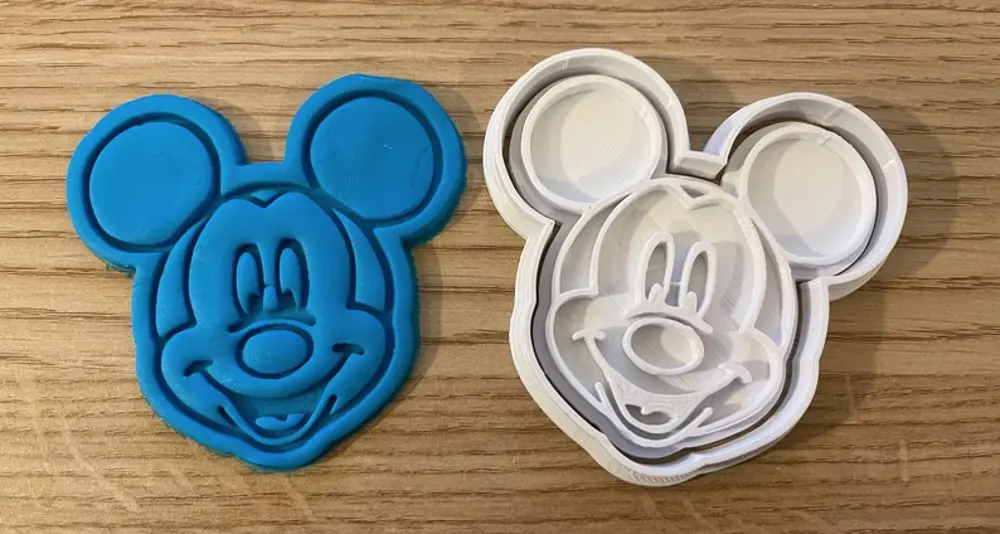
Let’s start with the question everyone asks: Is it legal to sell products I 3D print from a file I downloaded online?
First, to be clear, we’re not offering legal advice here and laws differ depending on where you live. But, mostly, no. It’s not usually legal to sell the 3D print generated from a digital file you either downloaded for free or purchased online unless you have the creator’s express permission. Let’s explain.
Nearly every 3D model digital file you’ll find online at resources such as Thingiverse, Cults, CGTrader, and MyMiniFactory among many others, comes with a license type attached. The original author or designer who uploaded the file to either share or to sell attached their permission for you to 3D print and sell the object or they prohibit you from doing so.
Thingiverse encourages its platform users to adopt a Creative Commons license for uploaded models. A Creative Commons license is one of several public copyright licenses that enable the free distribution of an otherwise copyrighted work.
“In the spirit of maintaining an open platform, all designs are encouraged to be licensed under a Creative Commons license, meaning that anyone can use or alter any design,” it states on the Thingiverse platform. However, designers can also layer on top of the Creative Commons license certain stipulations, such as prohibiting the sale of 3D prints made from digital models. Most designers on Thingiverse have opted to restrict use of their designs for non-commercial purposes only. Non-commercial means you can’t sell it, but you can 3D print it for personal use. Whether you paid for the file or got it for free doesn’t effect the license.
Below are the common license types you’ll find at online model file repositories and most are used in combination.
| License | Symbol | Definition |
| Copyright |
|
A copyright symbol informs others that copyright exists on your work and that those who want to use, edit, sell, your intellectual property should obtain permission from you. |
| Registered Trademark |
 |
The “R” on a product is not a license type, rather it means that a brand name or logo is protected by (officially registered in) the U.S. Patent and Trademark Office and, typically, no licenses are granted. International copyright treaties extend this protection to many other countries. |
| Creative Commons (CC) |
 |
Creative Commons works within copyright law. It allows creators to grant permission to everyone to use their work in certain ways. |
| Creative Commons – NonCommercial |
 |
This license lets others use your work but not sell it or sell derivatives of it. Any Creative Commons license without this non-commercial designation can be sold. |
| Creative Commons – Attribution (CC BY) |
  |
This license lets others distribute, remix, adapt, and build upon your work and sell it, as long as they credit you for the original creation. |
| Creative Commons- Attribution – Adaptations (CC BY-SA) |
   |
This license allows anyone to distribute, remix, adapt, sell, and build upon the material in any medium or format, so long as attribution is given to the creator. If you build upon the material, you must license the modified material under identical terms. |
| Creative Commons – Attribution-NonCommercial (CC BY-NC) |
    |
This license lets others remix, adapt, and build upon your work but not sell it, and although their new works must also acknowledge you and be non-commercial, they don’t have to license their derivative works on the same terms. |
| Creative Commons Public Domain (CC0) |
|
CC0 (aka CC Zero) is a public dedication tool, which allows creators to give up their copyright and put their works into the worldwide public domain. CC0 allows anyone to distribute, remix, adapt, sell, and build upon the material in any medium or format, with no conditions. |
| Remixing |
 |
This license allows (or if crossed through, denies) others to remix, edit, adapt, or build upon the digital file. |
Not all 3D digital model sites follow the same Creative Commons license types using the same symbols, but that doesn’t make their license claims less valid.
For example, MyMiniFactory, has a license type of “exclusivity” meaning, when you see the exclusivity symbol (of two hands shaking), the designs are exclusively hosted on MyMiniFactory. So even if you’re allowed to use them, you can’t upload them anywhere else.
Cults puts a copyright symbol on every uploaded file, which means they are exclusively reserved for private and personal use, no selling, unless where it explicitly says you can sell them. It’s worth reading the details of each uploaded design because some designers may redirect you to another site, such as Patreon, where they sell their commercial licenses to their designs with a subscription to their work.
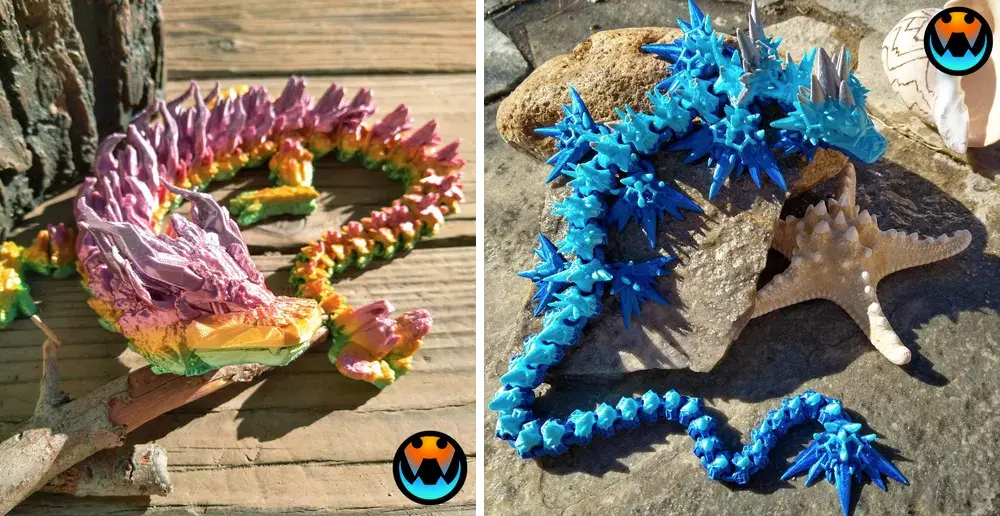
Patreon is an interesting take on the digital model repository. There, you purchase a monthly subscription to the work of individual designers, such as popular articulating dragon designer Cinderwing 3D who grants commercial licenses to their subscribers to sell physical 3D prints of their designs. The same designs posted by Cinderwing 3D on Cults have a non-commercial license.
Other repository sites, including CGTrader and TurboSquid, have a default “Royalty Free License” on all digital files, which differs from the license types we’ve discussed so far. Most of the files on these two sites are not STLs intended to produce physical objects, but instead are digital files typically intended to be incorporated into a larger work, such as virtual reality or augmented reality environments. For example, you can purchase a digital model of a vase to include in your digital rendering of a home or in a video game. A royalty is a fee paid every time the user uses the purchased file, such as every time a copy of the video game is sold. A Royalty Free License means you pay once, not for ever use by anyone playing your game. It does not mean you are “free” to use the file anyway you want. In fact, CGTrader’s terms of use are very specific, and say any file on their site can not be 3D printed in physical form and sold, unless expressly permitted by the creator. Same at TurboSquid. So, unless it says otherwise, the 3D printable files are for personal use only.

Another license type you’ll see on CGTrader and elsewhere is “Editorial License”. Here the creator is granting you permission to use the design if you’re writing, for example, a blog post related to the subject of the design. You can not use the design in any way to promote yourself, sell it, or create a remix from it.
The bottom line here is to read and understand the license types imposed on the file by the owner and the site where you find the file. But wait, it’s not always that clear-cut.
Simply because you have downloaded a file that includes a license for printing and selling, does not mean that it doesn’t violate someone else’s intellectual property. The item printed may be covered by a third party’s intellectual property or patents. Although the CAD model itself may not infringe on the patent, a printed item could.
A Disney character is a perfect example. Disney holds trademark and copyright registrations for its fairy tale characters. If an individual uploads an STL of a Mickey Mouse figurine to Cults and selects a license type that enables purchasers to sell the resulting 3D print, the resulting figurines likely still violate the Disney trademark.
Iron Man & Baby Yoda
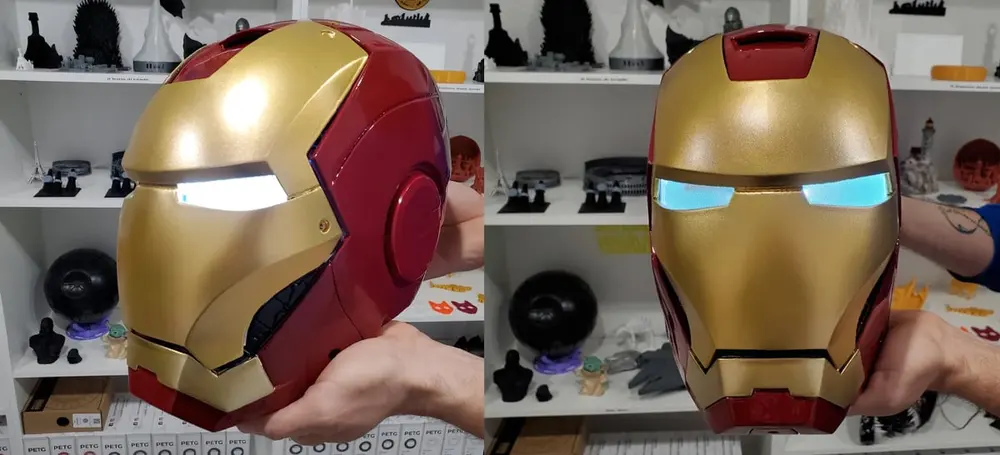
So if Iron Man and Baby Yoda are the intellectual property of Disney, why are there so many 3D printed Iron Man helmets and Baby Yoda figurines for sale on Etsy?
For help answering this question, All3DP turned to prominent patent and intellectual property lawyer Chris Higgins at the San Francisco-based law firm Orrick, Herrington & Sutcliffe. Higgins has a global reputation as an authority on legal issues in 3D printing and he leads Orrick’s 3D Printing Group.
“It could be due to a variety of factors,” Higgins says about Iron Man helmets on Etsy. “But most likely it is because Disney has not reached the thousands of sellers on Etsy that are selling items that include what Disney believes to be its protected copyrights or trademarks.”
In other words, just because a 3D printed product is for sale at an online platform, doesn’t mean it’s not violating another party’s intellectual property. It may just be that Disney’s trademark office has bigger fish to fry, not that it’s okay to sell 3D printed Boba Fetts.
Disney does license its products to toy manufacturers and others, but it’s unlikely that the 3D printers on Etsy have a license, according to Higgins “given what a license may cost relative to the amount of sales an artist has on Etsy.”
Just a few years ago, Disney reached out to Thingiverse to request that a long list of Star Wars models be removed from the site for violating the company’s IP. Thingiverse complied, and no lawsuits were filed.
And still, there’s no shortage of Minion and Mandalorian model files for sale online, even when the terms and conditions of the model repositories clearly state sellers must own the IP of their uploads.
How is this possible? Likely, it’s a matter of numbers. There are thousands of digital files uploaded every day at online digital repositories and it’s not feasible for staff at these companies to act as IP police for every upload. It’s the honor system backed up with a clear way the real IP holders can request digital files to be removed.
Original Designs, Derivatives & Tools

So if it’s very likely that any 3D print related to Disney, Star Wars, and Marvel characters, or any other copyrighted intellectual property, can not be legally sold, what can you 3D print and sell?
As we mentioned above, you can sell 3D prints from any unique digital 3D model that doesn’t infringe on another party’s IP if the original artist gives you express permission. The list of these is, unfortunately, not long.
If you’re a talented designer and know your way around computer-aided design software, such as Sketch Up or Fusion 360, any original object that you create from scratch can be sold. You can sell both the 3D digital files and the final 3D printed object. This is not the same as altering a file you find online.
Downloading an STL or 3MF or other file format and altering it is called remixing and the resulting work is called a derivative. As we mentioned above, some designers prohibit any remixing or selling any derivative of their work. Even if you alter the file beyond any reasonable recognition of the original, you still started with someone else’s work, so it’s a derivative. Can they prove it? Well, why take that risk. Best to start from scratch if you plan to sell the print or the digital file.
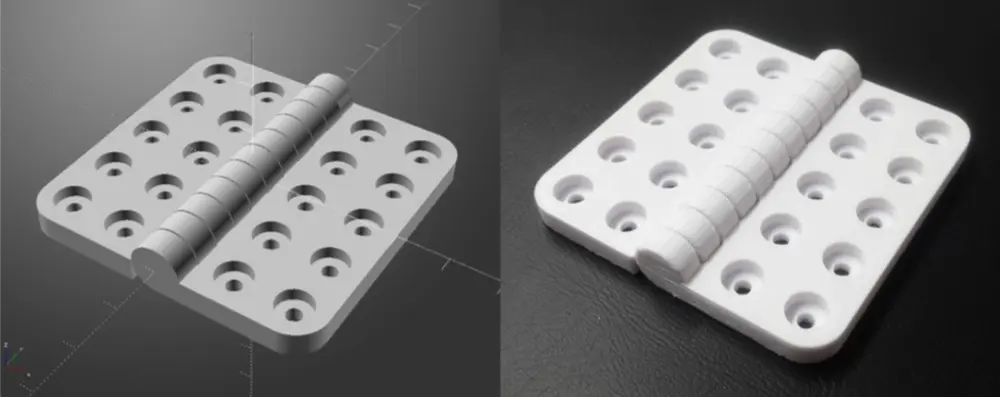
Useful Things
Another category of things you can 3D print and sell are functional objects. Copyright law grants protection for artwork or decorative items, but not for items that are deemed purely functional. What is functional? It’s open to interpretation. A functional item, such as a vase, may also have a copyrightable design applied to it.
“A good example of a functional object that could still have IP protection are the Ironman helmets on Etsy,” says Higgins. “A helmet is functional, but the inclusion of Ironman images and likeness may still require a license from Disney.”
If the decorative portion of an object can be seen as separate from the functional portion of the object, it’s likely that the object as a whole may be eligible for intellectual property protections. However, there are thousands of iPad holders, desk organizers, planters, clips, and hangers that are purely functional. These typically can be 3D printed and sold without issue as long as you either create the original digital file yourself or acquire a file that’s licensed to allow commercial use for prints or derivatives.
But again, just because you may think an item is purely functional doesn’t necessarily make it so, especially if the original designer has indicated that the file is not to be remixed or sold. Take, for example, vacuum cleaner spare parts. Well-known manufacturer Miele posts several spare parts for its vacuums and other appliances on Thingiverse under a non-commercial license, meaning you can not print and sell these items.
Will I Go To Jail?

Copyright infringement is a criminal offense. Not knowing or not understanding that you’re selling 3D prints of a design that is someone else’s intellectual property is not a legal defense.
You may be thinking, “Well, other people are getting away with it.” Perhaps. But just like speeding in your car or eating something before you bought it, it’s not legal just because others seem to get away with it.
The creator and owner of a design can take legal action against you or your business for infringing on their copyright. The legal action is to both stop you from selling the protected design and to recoup money you made selling the item. Court cases are usually expensive to bring, so the plaintiff is typically seeking large sums of money as damages. If you’re not making large sums of money, it’s less likely you’ll attract attention of copyright holders if you’re using their IP.
Today, in the U.S., when an individual or business makes a 3D model or a 3D print available for sale that violates someone else’s IP, the Digital Millennium Copyright Act (DMCA) lays out a procedure by which a copyright owner can ask the online provider to take down a work from its website that infringes on their copyright. Websites, such as Thingiverse state that they follow DMCA and provide details on how to request, for no fee, a design be removed. Many sites consider posting others’ IP (if you’re found to have done so) a violation of their terms of use and could ban you from using their platform in the future.
“Our legal team receives and reviews requests on a regular basis and, in collaboration with the software team, works to remove these violations,” says Jason Chan, director of product at MakerBot, which owns Thingiverse. “MakerBot takes IP rights very seriously, and we want to make sure designers feel confident when they use Thingiverse.”
It’s a time-consuming process for IP rights holders to reach out to model repositories, but it’s the more common action compared to taking someone to court.
Sell a Service or an STL, Not a Print
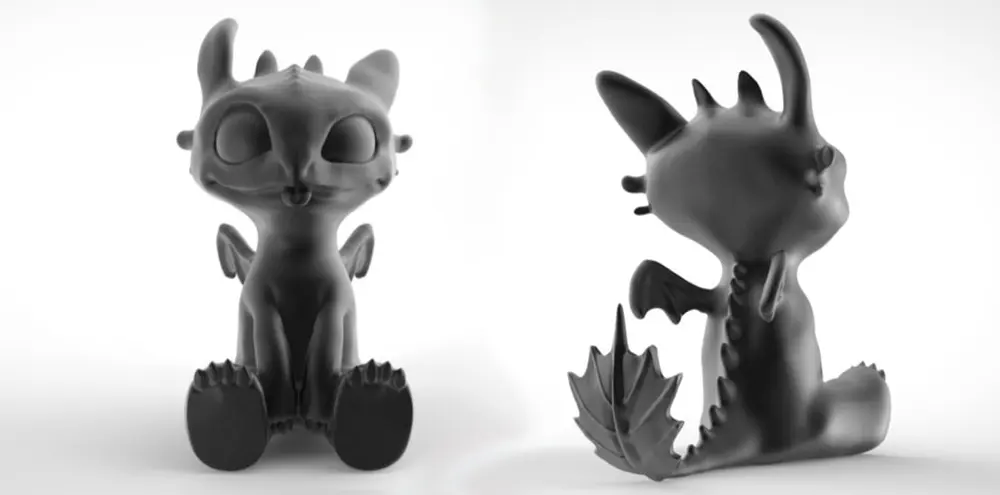
Alongside the 3D printed articulated dragons and soap dishes on Etsy are individuals offering 3D print services. This is a great alternative or addition to selling 3D printed items online. There are practically no restrictions for what you can print for others as a service, as long as it doesn’t break any laws locally, such as 3D printed guns.
Although 3D printing and selling a Baby Yoda figurine maybe a violation of Disney’s IP, fulfilling a customer’s order of a Baby Yoda figurine is not necessarily any less of an IP violation. In fact, even printing Disney character figurines for personal use may be still, technically, an IP violation. But “the odds of being sued for infringement are next to zero,” says Higgins. “First, it would be nearly impossible for the copyright or patent holder to know that an individual made the print, and even so, there would be little incentive to sue the individual for infringement because of the lack of damages and likely public backlash if a suit were to be filed.”
In the end, it’s not in Disney’s best interest to keep Baby Yoda figurines out of peoples’ hands. They want to promote their characters and encourage fans to collect them, even if a very small fraction are 3D printed.
Selling Your Digital Files
Many designers make money selling their original STL files on a wide variety of sites. As long as it’s your original creation and doesn’t violate another’s IP, then you should have no restrictions on selling STLs, or any other digital format for that matter. Plus, if you see someone has remixed your STL and posted it, or the resulting prints, for sale on Etsy, Cults, Gumroad, or Amazon, you can reach out to those sites and have the file and product removed. The poster also risks being permanently banned from those platforms.
You love 3D printing and your talent can result in some extra cash in your pocket, but make sure you read and follow the license types and intellectual property stipulations, so your profitable business isn’t yanked or banned from online platforms, or worse.
Source: Things to 3D Print and Sell – A Legal Guide | All3DP Pro


